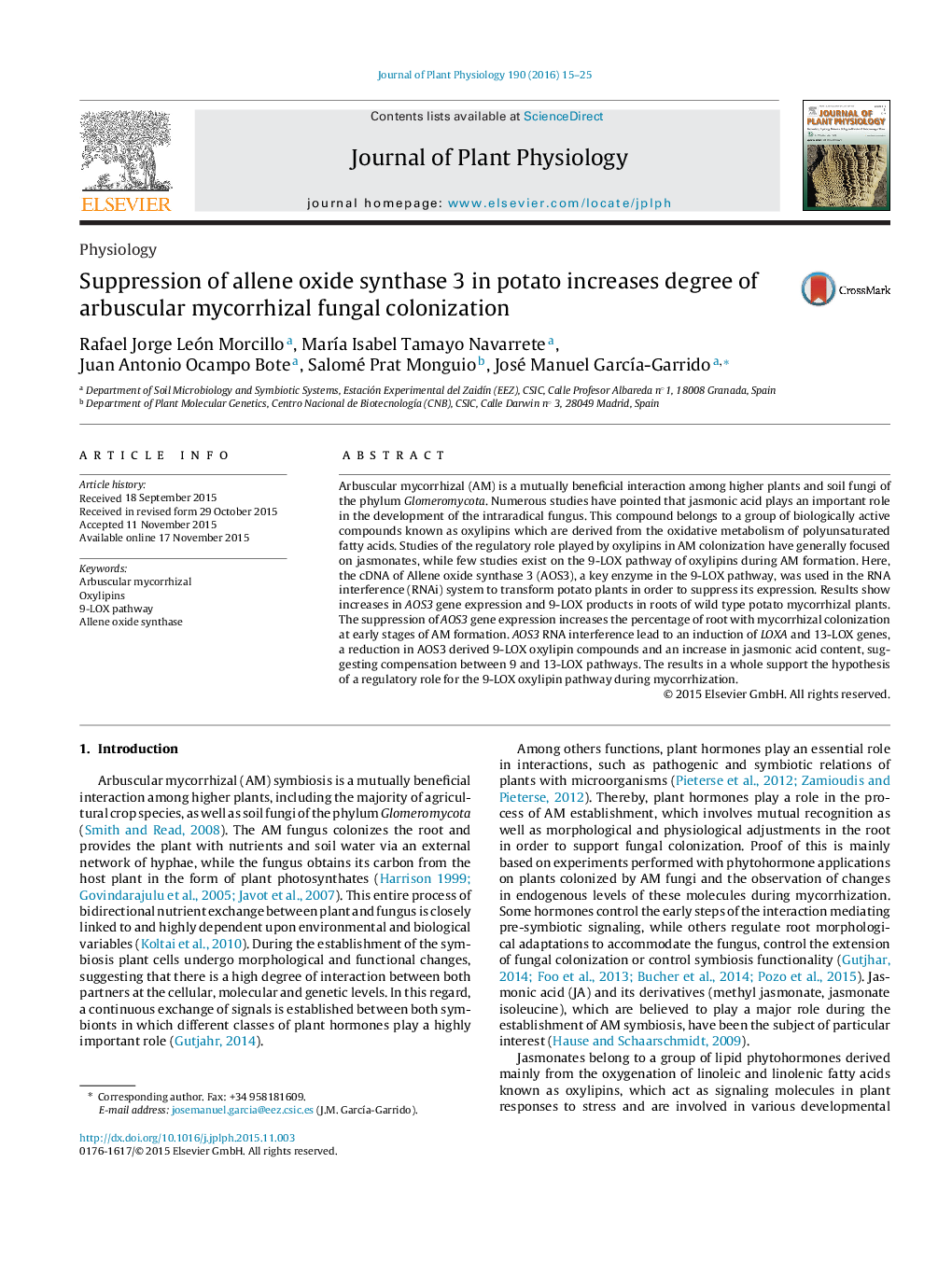| Article ID | Journal | Published Year | Pages | File Type |
|---|---|---|---|---|
| 2055493 | Journal of Plant Physiology | 2016 | 11 Pages |
Arbuscular mycorrhizal (AM) is a mutually beneficial interaction among higher plants and soil fungi of the phylum Glomeromycota. Numerous studies have pointed that jasmonic acid plays an important role in the development of the intraradical fungus. This compound belongs to a group of biologically active compounds known as oxylipins which are derived from the oxidative metabolism of polyunsaturated fatty acids. Studies of the regulatory role played by oxylipins in AM colonization have generally focused on jasmonates, while few studies exist on the 9-LOX pathway of oxylipins during AM formation. Here, the cDNA of Allene oxide synthase 3 (AOS3), a key enzyme in the 9-LOX pathway, was used in the RNA interference (RNAi) system to transform potato plants in order to suppress its expression. Results show increases in AOS3 gene expression and 9-LOX products in roots of wild type potato mycorrhizal plants. The suppression of AOS3 gene expression increases the percentage of root with mycorrhizal colonization at early stages of AM formation. AOS3 RNA interference lead to an induction of LOXA and 13-LOX genes, a reduction in AOS3 derived 9-LOX oxylipin compounds and an increase in jasmonic acid content, suggesting compensation between 9 and 13-LOX pathways. The results in a whole support the hypothesis of a regulatory role for the 9-LOX oxylipin pathway during mycorrhization.
